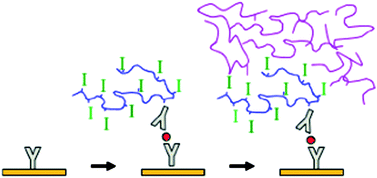Antigen detection using polymerization-based amplification†
Abstract
The influenza virus has been subtyped from crude lysates using polymerization-based amplification. In this novel chemical approach to detection, signal amplification was achieved by coupling a polymerization reaction to a


 Please wait while we load your content...
Please wait while we load your content...